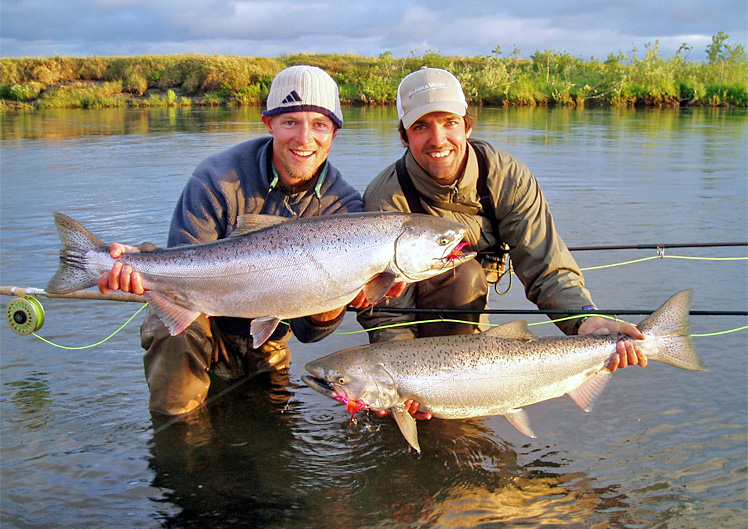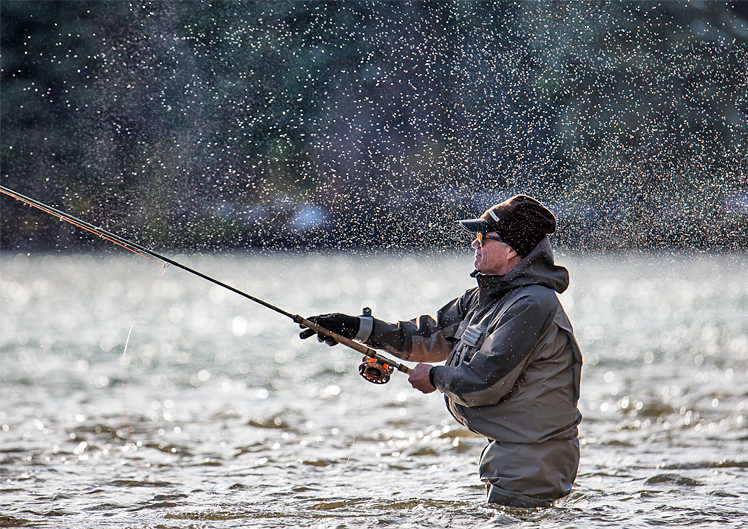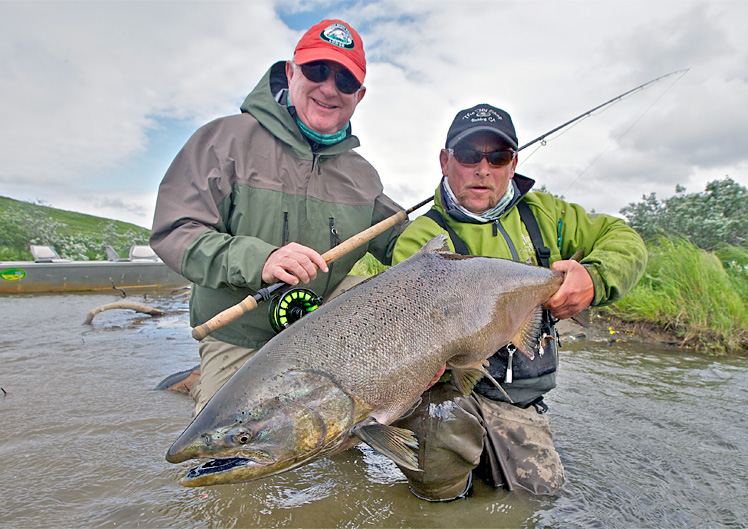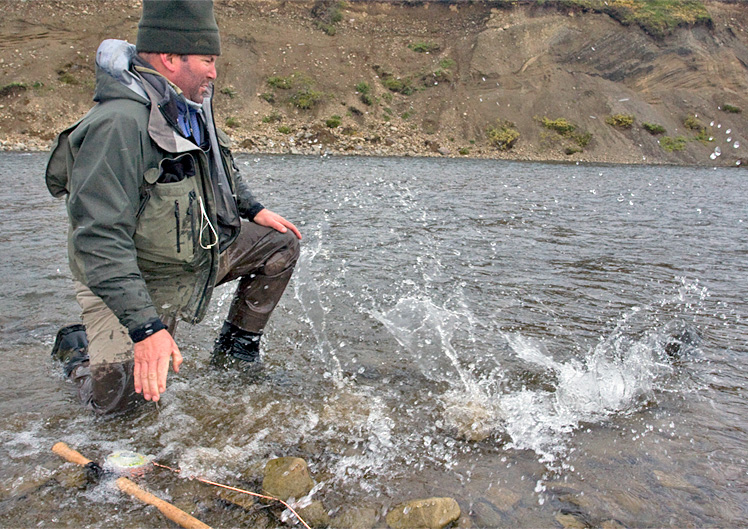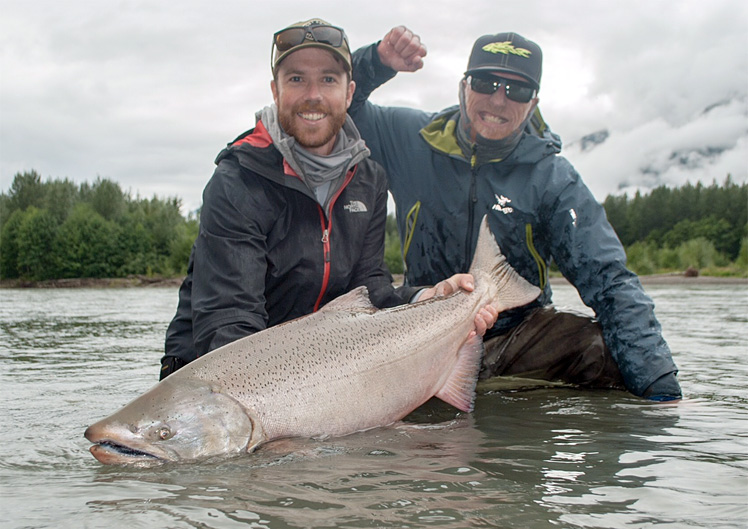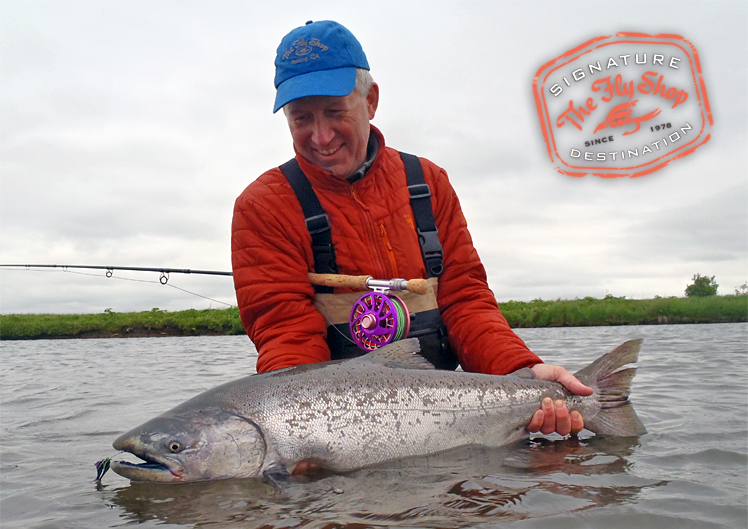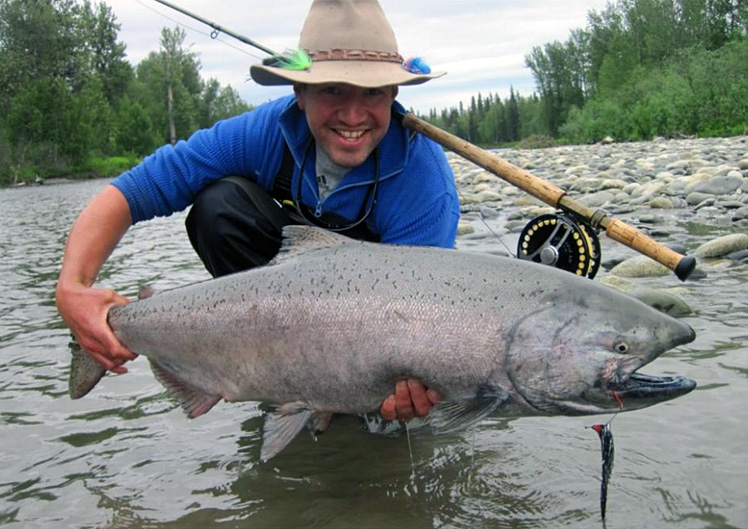Alaska West
Alaska
Deneki Outdoors owns and operates this destination on the banks of the Kanektok River, and has spared no expense to make it one of the most nicely appointed camps in Alaska.
Real beds and linens, oil heaters, full-on, separate hot water shower rooms, drying tent; all features one would expect in a standard lodge, but which are considered unheard of luxuries in a rustic wilderness camp environment. As well, Deneki hires the best guiding talent they can can find, many of whom are full time guides before and after the short Alaska season (and many of whom return to guide at Alaska West, season after season). This is a great adventure for the angler looking for angling diversity (the river gets all 5 species of salmon, as well as resident populations of rainbow trout, sea run dolly varden and Arctic grayling), wild country, and a well-run and organized camp, all at a reasonable rate.
